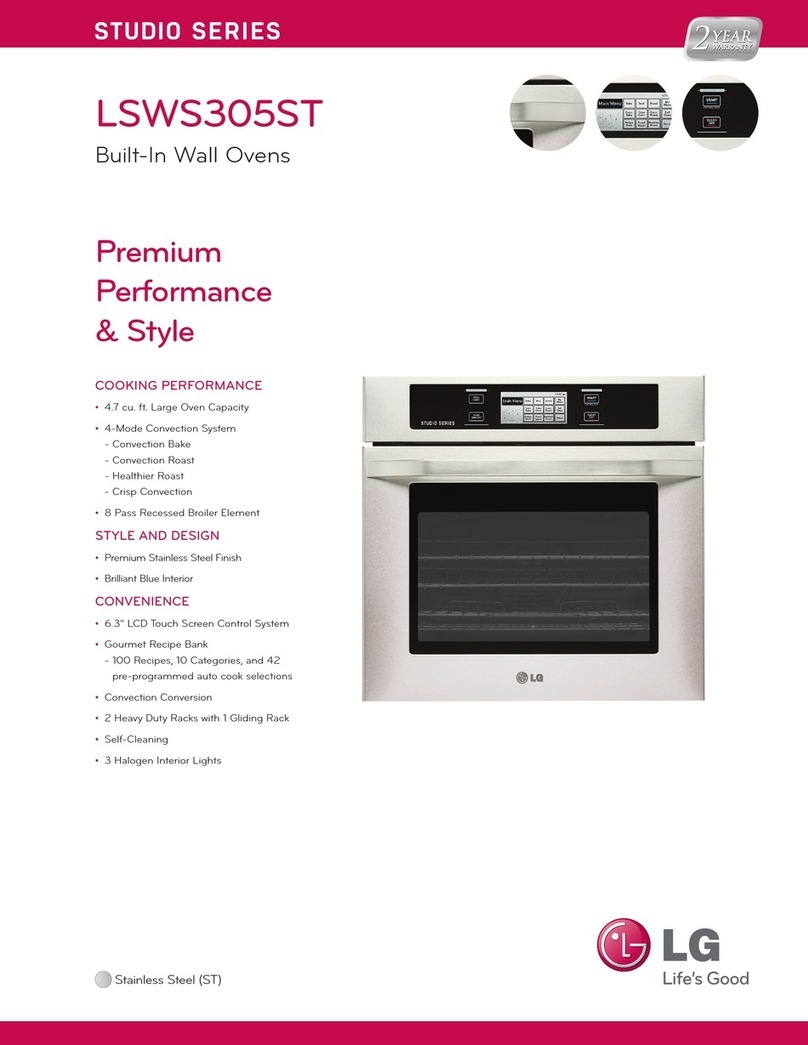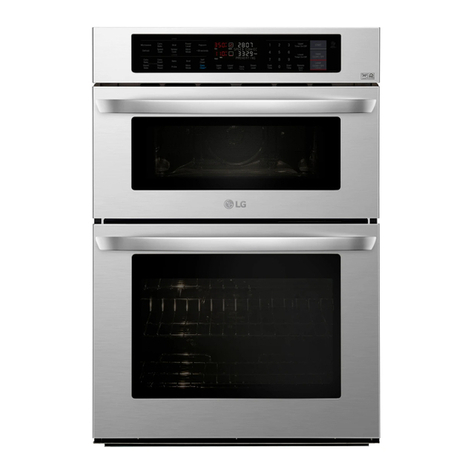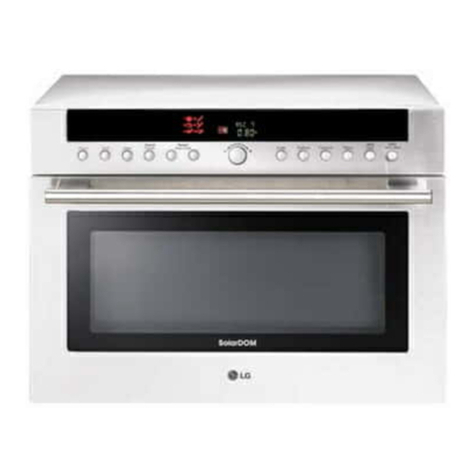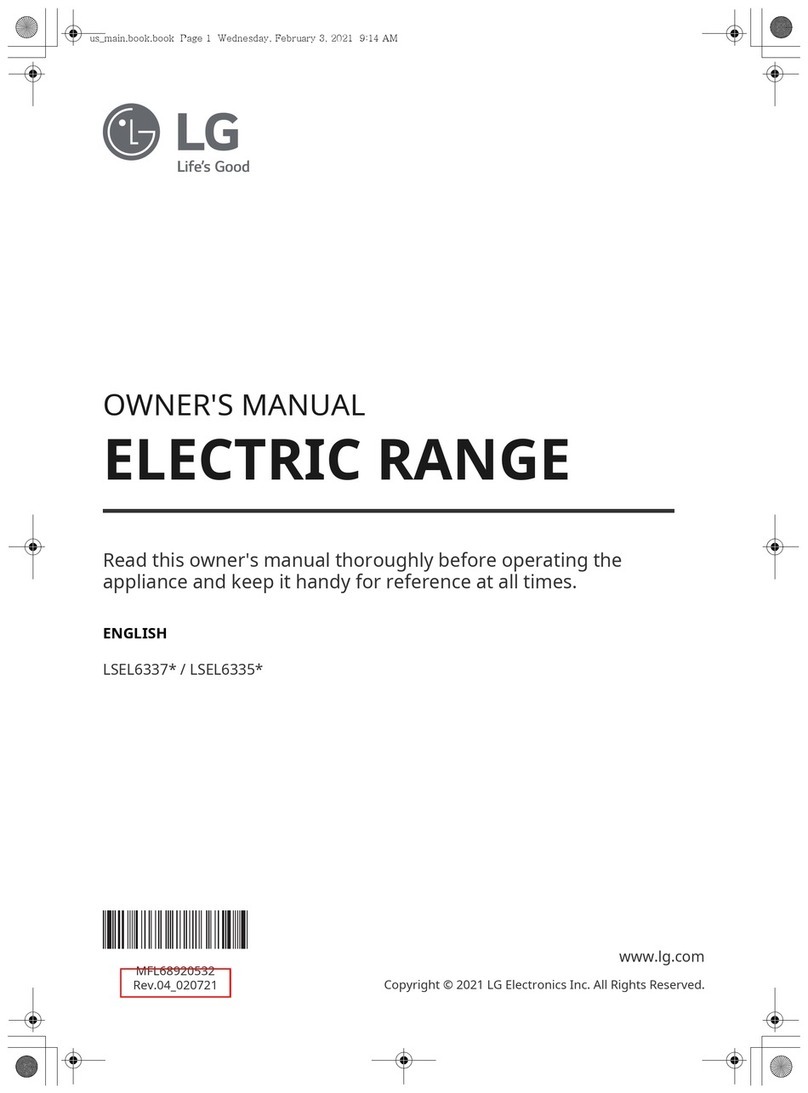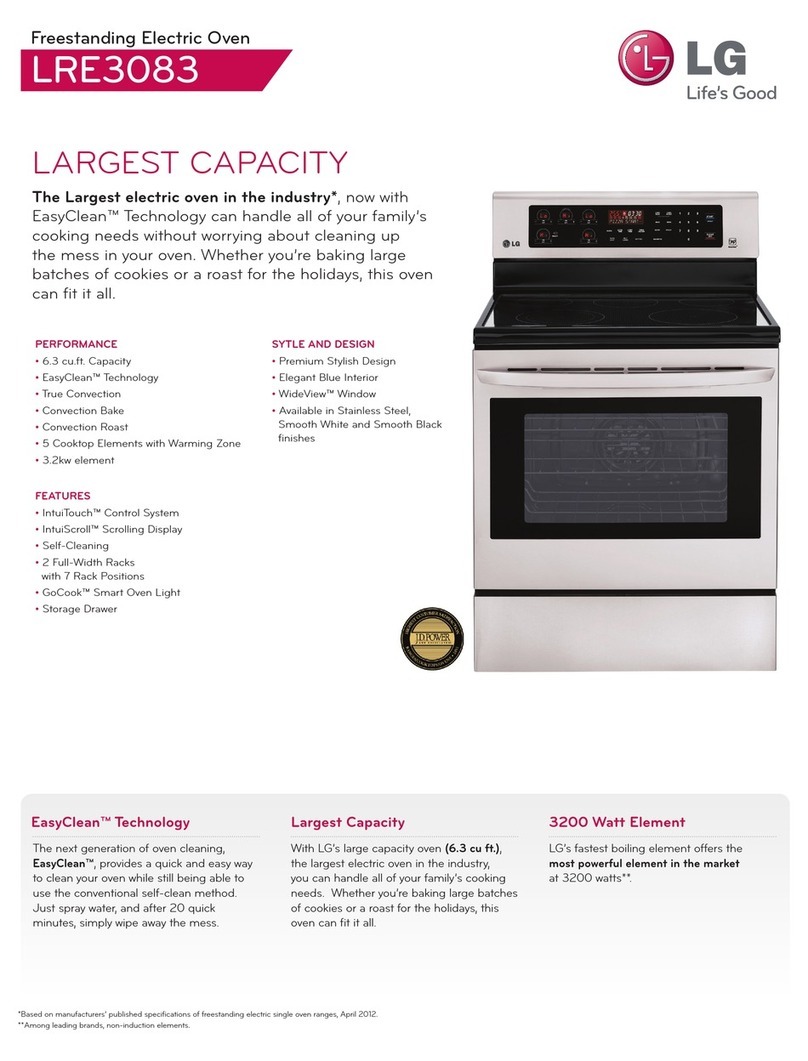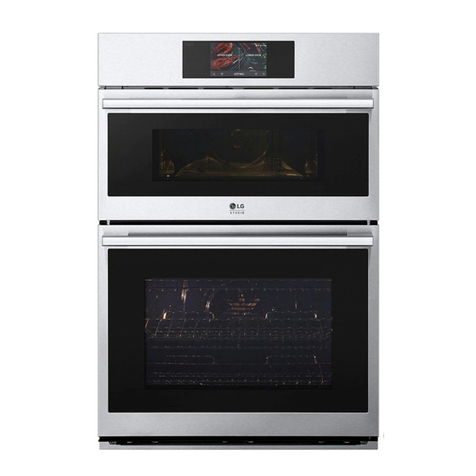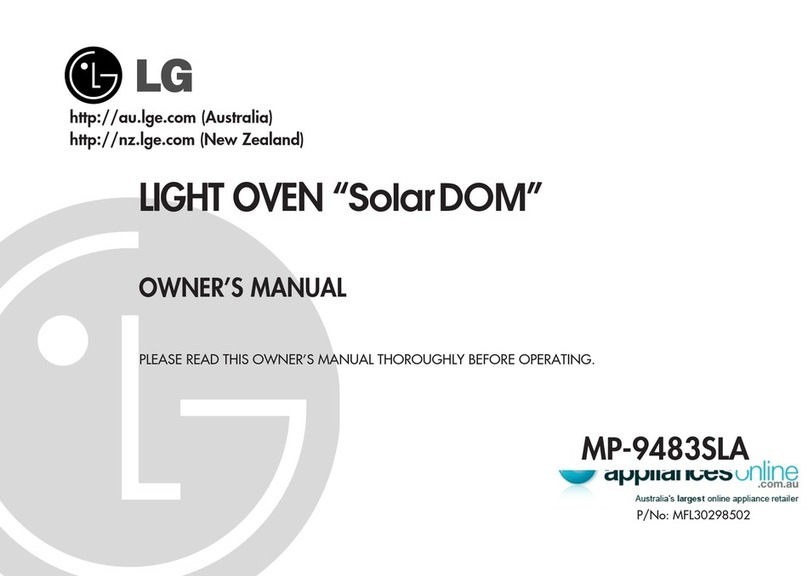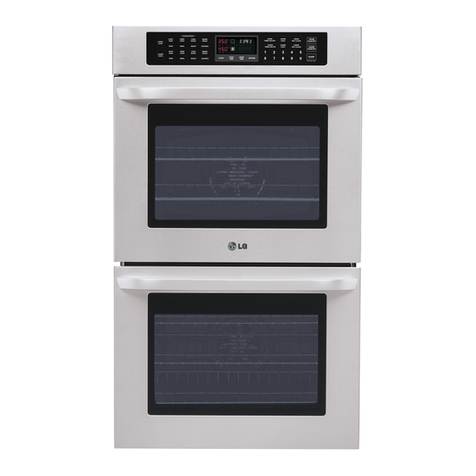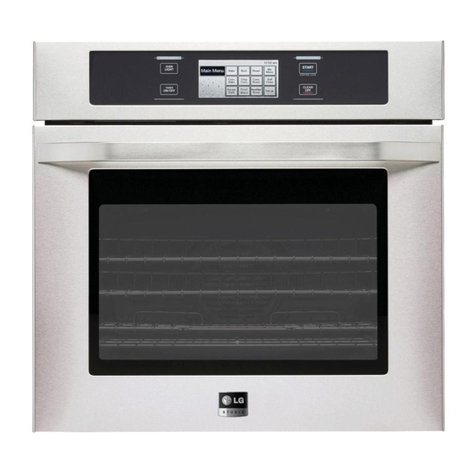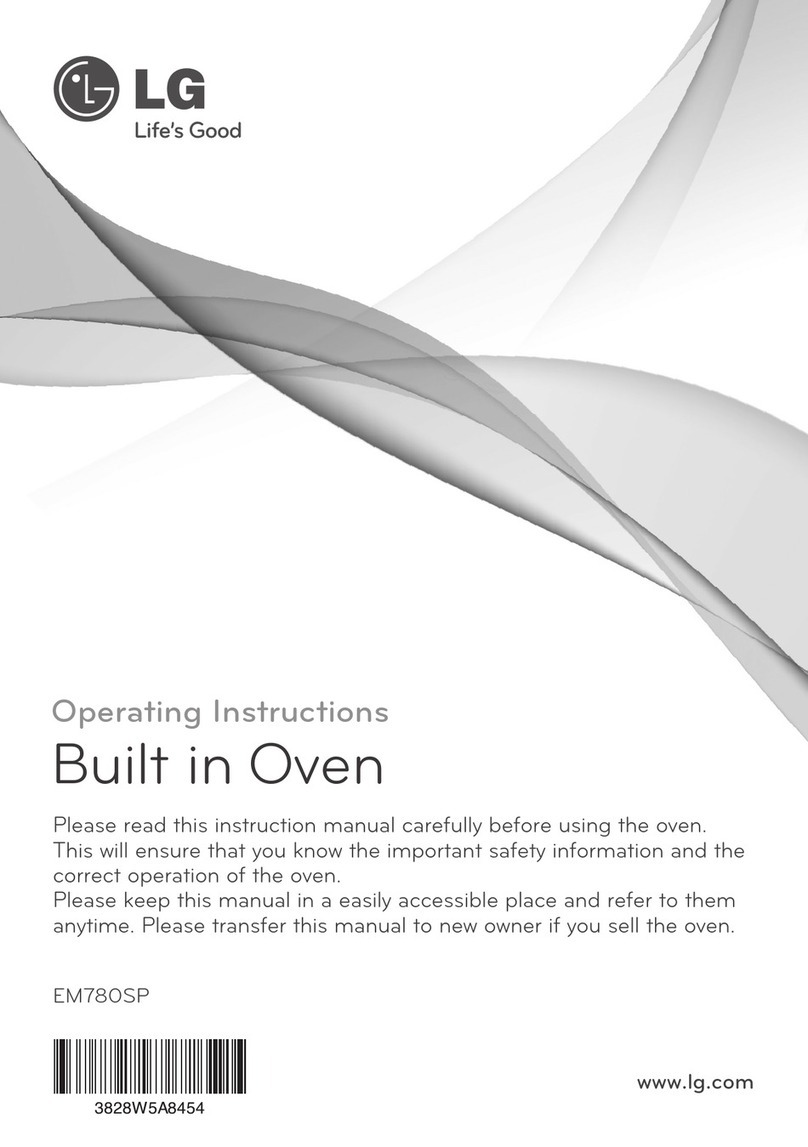4-4
CIRCUIT DESCRIPTION
GENERAL DETAILS
•The low voltage transformer supplies the necessary
voltage to the micom controller when power cord is
plugged in.
•When the door is closed, the primary switch is ON, the
secondary switch is ON, and the monitor switch opens
(contact COM and NO).
WHEN SELECTING COOKING POWER
LEVEL AND TIME
•The micom controller memorizes the function you set.
•The time you set appears in the display window.
•Each indicator light turns on to indicate that the stage
has been set.
WHEN TOUCHING THE START BUTTON
•The coil of the relay is energized by the micom
controller.
•Power input is supplied to the high voltage transformer
through the fuse to the primary switch and relay 4.
•Turntable rotates.
•The fan motor rotates and cools the magnetron by
blowing the air (coming from the intake on the
back cover).
•The air is also directed into the oven to exhaust the
vapor in the oven through the upper plate.
•Cooking time starts counting down.
•3.2 volts AC is generated from the filament winding of
the high voltage transformer. This 3.2 volts is applied to
the magnetron to heat the magnetron filament through
two noise-preventing choke coils.
•A high voltage of approximately 2100 volts AC is
generated in the secondary of the high voltage
transformer which is increased by the action of the high
voltage diode and charging of the high voltage
capacitor.
•The negative 4,000 Volts DC is applied to the filament
of the magnetron.
WHEN THE OVEN IS SET AT ANY LEVEL
EXCEPT MAXIMUM.
•The micom controller controls the ON-OFF time of
relay 4 by the applied signal to vary the average output
power of oven as POWER LEVEL. (refer to page 1-1)
•One complete cycle of relay 4 is 32 seconds.
WHEN THE DOOR IS OPENED DURING
COOKING
•Both the primary switch and relay 4 are cut off primary
winding voltage of the high voltage transformer.
•ON-OFF of relay 4 is coupled electrically with opening
and closing of the secondary switch.
•When the door is opened, the secondary switch is
opened and when the door is closed, the secondary
switch is closed.
•The cooking time stops counting down.
•Relay stops functioning.
•As the door is opened, if the contact of primary switch
and relay 4 fails to open, the fuse opens due to the
large current surge caused by the monitor switch
activation, which in turn stops magnetron oscillation.
WHEN TOUCHING THE START BUTTON
WITH THE HEATER COOKING
FUNCTION SELECTED
•The contacts of the primary switch and the secondary
switch close the circuit.
•A.C. voltage is applied to the heater through thermostat
as shown by the solid line.
•Turntable rotates.
•The fan motor rotates.
•The air is also directed into the oven to exhaust the
vapor in the oven through the base plate and back
plate.






